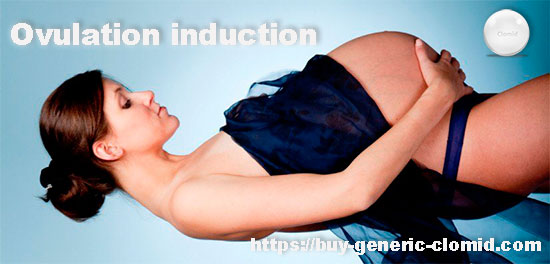We continue to answer questions related to ovulation induction
How long can the induction of ovulation with clomiphene citrate be carried out?
Induction with this drug can be carried out for 4-6 months. In 40-45% of all women and in 80% of correctly selected women, pregnancy will occur within 6 months. After six months, it is impractical to carry out ovulation induction.
What gonadotropin preparations are used to induce ovulation?
Gonadotropins are hormones that are produced by the pituitary gland, or substances that have a similar effect to pituitary hormones. Modern medicine uses the following gonadotropins to induce ovulation:
- human menopausal gonadotropin (HMGs)
- human chorionic gonadotropin (hCG)
- follicle stimulating hormone (FSH)
- luteotropic hormone (LH, luteinizing hormone).
What is human menopausal gonadotropin?
Human menopausal gonadotropin is a combination of FSH and LH, mainly created by genetic engineering from mammalian ovarian cells (for example, hamsters). Such combinations have from 60 to 120 units of hormones (depends on the manufacturer). For the first time, FSH and LH were isolated from the urine of menopausal women in 1954, and this combination of hormones was called pituitary human gonadotropins. In menopausal women, the amount of FSH and LH in the urine is increased. The first ovulation induction was performed in 1958, and the first pregnancy after ovulation induction occurred in 1960.
Gonadotropins are most often indicated in cases where the induction of ovulation with clomiphene citrate is unsuccessful, as well as in women with hypothalamic-pituitary factor infertility, when a sufficient amount of FSH and LH is not produced.

What is human chorionic gonadotropin?
Human chorionic gonadotropin is produced by the placenta, and it is obtained from the urine of pregnant women. The chemical structure, and therefore the effect, is almost the same with the pituitary gland LH. Since a sharp increase in LH before ovulation contributes to the maturation of the egg, the introduction of hCG before the expected ovulation leads to the rupture of the follicle and the release of the egg.
To get a positive effect with this type of ovulation induction, it is very important to choose the right day of the cycle for the administration of the drug, which many doctors determine using ultrasound and measuring the level of estrogen in the blood. Ovulation occurs within 36-48 hours after HCG administration. This drug is often used to enhance the effects of clomiphene citrate when it is not possible to trace the peak of LH. Since hCG is excreted in the urine, a pregnancy test may be false positive within 10 days after HCG administration.
What are the side effects of using gonadotropins?
Up to 33% of all pregnancies that occur after the induction of ovulation by gonadotropins are multiple (70% are twins, 30% are triplets). Therefore, the rate of premature birth, and hence the mortality rate of newborns, is increased. A dangerous side effect is ovarian hyperstimulation syndrome (when using hCG, this syndrome is less common than when using other drugs for ovulation induction, in this case we are not talking about clomid and its generics). Other side effects are swelling and soreness of the mammary glands, bloating, abdominal pain, mood changes.
Unlike IVF, the level of fetal malformations after ovulation induction does not exceed the level without ovulation induction. Ectopic pregnancies occur more often after ovulation induction (5-8% of cases compared to 1-2% of cases in the general population of women). Miscarriages are observed in 15-21% of women. Pregnant women after ovulation induction are more likely to suffer from hypertension of pregnant women, and the frequency of placental abruption in such women is increased.